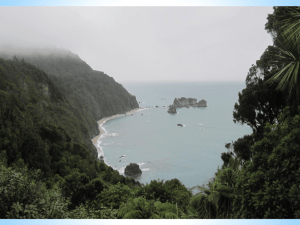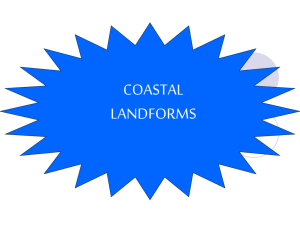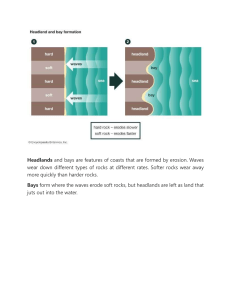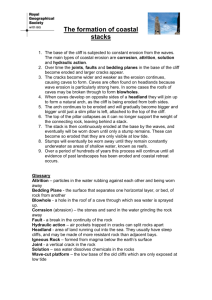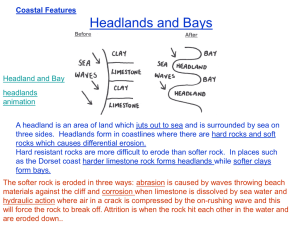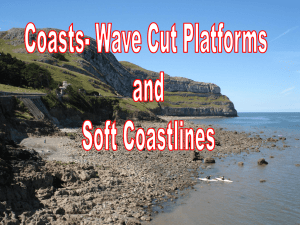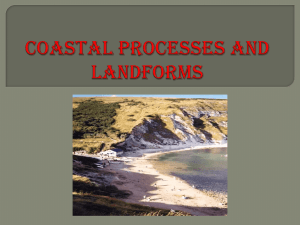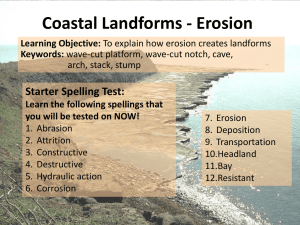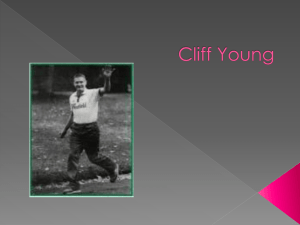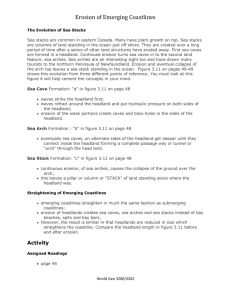What landforms are created by coastal erosion?
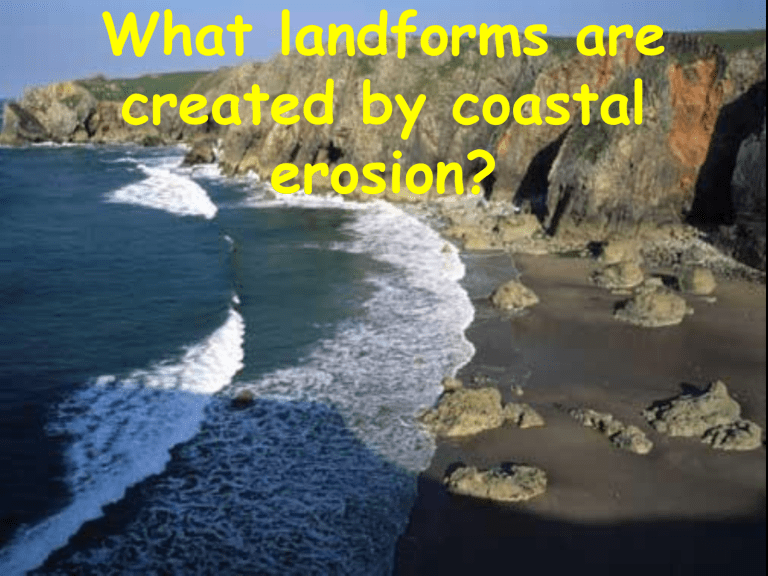
What landforms are created by coastal erosion?
Headlands and Bays
• Headlands are formed when the sea attacks a section of coast with alternating bands of hard and soft rock.
• The bands of soft rock, such as sand and clay, erode more quickly than those of more resistant rock, such as chalk. This leaves a section of land jutting out into the sea called a headland.
• The areas where the soft rock has eroded away, next to the headland, are called
bays.
Headlands and bays
5 minutes
Cliffs and wave-cut platforms
• Headlands are usually formed from cliffs. When the sea moves against the base of the cliff using corrasion and hydraulic action (and if the rock type is limestone or chalk, corrosion), it undercuts the cliff and forms a wave-cut notch.
• Above this notch, an overhang will form; in time, it will fall into the sea as a result of the pressure of its own weight and the pull of gravity.
• The sea will then continue to attack the cliff and form another notch. In this way, the cliff will retreat, becoming higher and steeper.
• The remains of the cliff rock, now below the sea at high tide, form a rocky, wave-cut platform.
How are cliffs and wave-cut platforms formed?
• As a result of erosion and weathering, some boulders will have fallen from the cliff onto the platform.
• As the width of the platform increases, so the power of the waves decreases, as they have further to travel to reach the cliff.
5 minutes
Caves, arches, stacks and stumps
• These are formed in rocks that have a fault or line of weakness. The action of the sea will exploit the fault, through erosional processes such as hydraulic action.
• In time the fault will widen to form a cave.
If the fault is in a headland, caves are likely to form on both sides. When the backs of the caves meet, an arch is formed.
• The sea will continue to erode the bottom of the arch . Weathering will also take place on the bare rock faces.
Caves, arches, stacks and stumps
• As the sea undercuts the bottom of the arch, a wave-cut notch will form. It will collapse in time, as it is pulled down by the pressure of its own weight and gravity.
• This leaves behind a column of rock not attached to the cliff, known as a stack.
• Continued erosion and weathering will lead to the formation of a stump that is visible only at low tide.
cliff
crack
cave
arch
stack
stump
Caves, arches, stacks and stumps
Make a simple copy of the diagram and put the labels in the correct order.
The formation of caves, arches, stacks and stumps
Put the statements into the correct order (copy into your books)
• http://www.bbc.co.uk/learningzone/clips/oldharry-rocks-coastal-processes-andlandforms/3245.html
